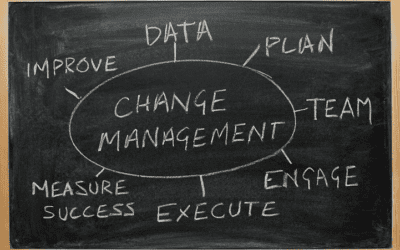Discover How RevOps Will Increase Enterprise Value
In today’s fast-paced business landscape, the mantra of “do more with less” has never been more relevant. Organizations are constantly seeking ways to optimize their operations, align their teams, and drive sustainable growth. Enter Revenue Operations (RevOps), a holistic approach that promises to harmonize sales, marketing, and customer success to create a seamless revenue-generating engine. But what does it truly mean to embrace RevOps? Let’s explore its core components: Strategic Integration, Operational Excellence, Proactive Anticipation, Business Strategy, and the importance of measuring goals.
Strategic Integration: The Heart of RevOps
At its core, RevOps is about breaking down silos. Traditionally, sales, marketing, and customer service have operated independently, often leading to miscommunication, wasted resources, and missed opportunities.
Strategic integration means fostering collaboration among these departments to create a unified approach to revenue generation, which depends on optimizing your CRM, while creating integrations with your marketing, customer service and financial platforms.
Imagine a symphony orchestra: each section-strings, brass, percussion- plays its part, but it is the conductor who brings them together. Similarly, a RevOps leader acts as the conductor, ensuring that each department harmonizes to achieve a common goal. By integrating teams, organizations can streamline processes, share valuable insights, and align their strategies to focus on the customer journey.
Consider a company that implements regular cross-departmental meetings, sharing data on customer interactions and feedback. This initiative not only enhances communication but also enables teams to identify trends and adapt strategies more effectively. The result? A customer experience that feels cohesive and personalized, ultimately driving loyalty and revenue.
Operational Excellence: Efficiency Meets Effectiveness
Operational excellence in RevOps is about refining processes to maximize efficiency while maintaining high-quality outcomes. It requires a commitment to continuous improvement and a willingness to embrace change. Organizations must evaluate their existing workflows and identify bottlenecks that hinder productivity.
For instance, implementing automation tools can streamline repetitive tasks, freeing up valuable time for team members to focus on high-impact activities. By utilizing Customer Relationship Management (CRM) systems that integrate marketing automation, sales tracking, and customer feedback, businesses can create a seamless flow of information that empowers teams to make informed decisions quickly.
Operational excellence also involves cultivating a culture of accountability. When team members understand their roles within the broader revenue strategy, they are more likely to take ownership of their contributions. Regular training and development programs can further enhance skills and ensure that teams are equipped to tackle evolving challenges.
Proactive Anticipation: Staying Ahead of the Curve
In a world where change is the only constant, proactive anticipation is vital for success. RevOps leaders empower organizations to not only respond to market shifts but also to predict and prepare for them. This forward-thinking approach relies on data analytics and insights to inform decision-making.
Imagine a scenario where a company tracks customer behavior and preferences. By analyzing this data, RevOps leaders can identify potential churn risks and implement strategies to address them before they escalate. This might involve personalized outreach, targeted content, or even loyalty incentives—all tailored to the unique needs of the customer.
Moreover, proactive anticipation extends beyond customer interactions. It also encompasses market trends and competitive analysis. By keeping a pulse on the industry landscape, organizations can pivot their strategies to capitalize on emerging opportunities. This foresight is what differentiates successful companies from their competitors.
Business Strategy: Aligning Vision with Execution
RevOps is not just a tactical framework; it’s deeply intertwined with an organization’s overarching business strategy. For RevOps leaders to be truly effective, it must align with the company’s vision, mission, and long-term objectives. This alignment ensures that every action taken by sales, marketing, and customer success teams supports the overall business goals.
To achieve this alignment, leadership must communicate a clear vision that resonates with all departments. Regular updates on company performance, market changes, and strategic goals foster a sense of shared purpose. When every team member understands how their work contributes to the larger vision, motivation and engagement soar.
Additionally, integrating RevOps into the business strategy allows organizations to make data-driven decisions. By leveraging analytics, teams can assess the impact of their initiatives on revenue growth and customer satisfaction, refining their approach based on real-world outcomes.

Measuring Goals: The Compass for Success
A crucial aspect of RevOps is the measurement of goals. Without clear metrics, it’s impossible to gauge progress or identify areas for improvement. Establishing Key Performance Indicators (KPIs) aligned with revenue objectives is essential for guiding teams and maintaining focus.
Effective KPIs should be specific, measurable, achievable, relevant, and time-bound (SMART). For instance, rather than a vague goal of “increasing sales,” a SMART goal would be “achieve a 20% increase in monthly recurring revenue (MRR) over the next quarter.” This level of specificity provides clarity and direction.
Regularly reviewing these metrics allows organizations to assess performance and pivot when necessary. In a RevOps framework, data is not just for reporting; it’s a tool for continuous improvement. Teams should conduct quarterly reviews to analyze what worked, what didn’t, and how strategies can be refined for better results.
Objectives and Key Results (OKRs) is a goal-setting framework designed to define and track objectives and their outcomes. This goal framework is what helped Netflix and Google scale. The format consists of two main components:
1. Objectives: Clear, qualitative goals that provide direction. They should be inspirational and motivating, setting a vision for what you want to achieve.
2. Key Results: Measurable outcomes that indicate whether you’ve achieved your objective. These should be specific, quantifiable, and time-bound, allowing you to track progress effectively.
The Importance of OKRs
Alignment: OKRs help ensure that everyone in the organization is moving in the same direction. When team members understand how their individual goals contribute to broader company objectives, it fosters a sense of purpose and collaboration.
Focus: By limiting the number of objectives, OKRs encourage teams to concentrate on what truly matters. This focus minimizes distractions and drives teams to prioritize high-impact initiatives.
Transparency: OKRs promote an open culture where goals and progress are visible to everyone. This transparency encourages accountability and fosters a collaborative environment.
Agility: In a fast-paced business world, priorities can shift quickly. The OKR framework allows organizations to adapt their goals as needed, ensuring they remain relevant and impactful.
Implementing OKRs is not merely a process; it’s a transformative journey that can redefine how your organization approaches goals. By fostering alignment, focus, transparency, and agility, OKRs empower teams to work collaboratively toward shared objectives.
As you embark on your OKR journey, remember that it’s okay to make adjustments along the way. The key is to stay committed to the principles of clarity, measurement, and continuous improvement. Embrace the challenge, and you’ll unlock new levels of success that propel your organization forward.
The Cultural Shift: Embracing RevOps
Transitioning to a RevOps model requires more than just implementing new processes; it necessitates a cultural shift within the organization. Teams must embrace collaboration, transparency, and a customer-centric mindset. Leadership plays a crucial role in fostering this culture, encouraging open communication and collaboration across departments.
Creating an environment where team members feel empowered to share ideas, feedback, and insights can lead to innovative solutions and enhanced performance. Celebrating successes—big or small—reinforces the importance of collective effort and keeps morale high.
Conclusion: The RevOps Journey
As we navigate the complexities of the modern business landscape, the importance of a RevOps leader’s approach cannot be overstated. By focusing on strategic integration, operational excellence, proactive anticipation, alignment with business strategy, and the measurement of goals, organizations can create a revenue-generating machine that not only drives growth but also delivers exceptional customer experiences.
Embracing RevOps is not a one-time initiative; it’s a continuous journey of evolution and improvement. The organizations that thrive will be those that understand the interconnectedness of their teams and harness the power of collaboration to achieve their goals. So, let’s embark on this journey together, transforming challenges into opportunities and paving the way for a prosperous future.
ReIntent Can Help You & Your Team
ReIntent clients support their people and process by accessing prospect data, real-time lead generation and managed marketing services. We believe every business is unique, and deserves a proven blueprint that’s tailored around our clients resources. Contact us today if you would like an audit or free prospect list.







